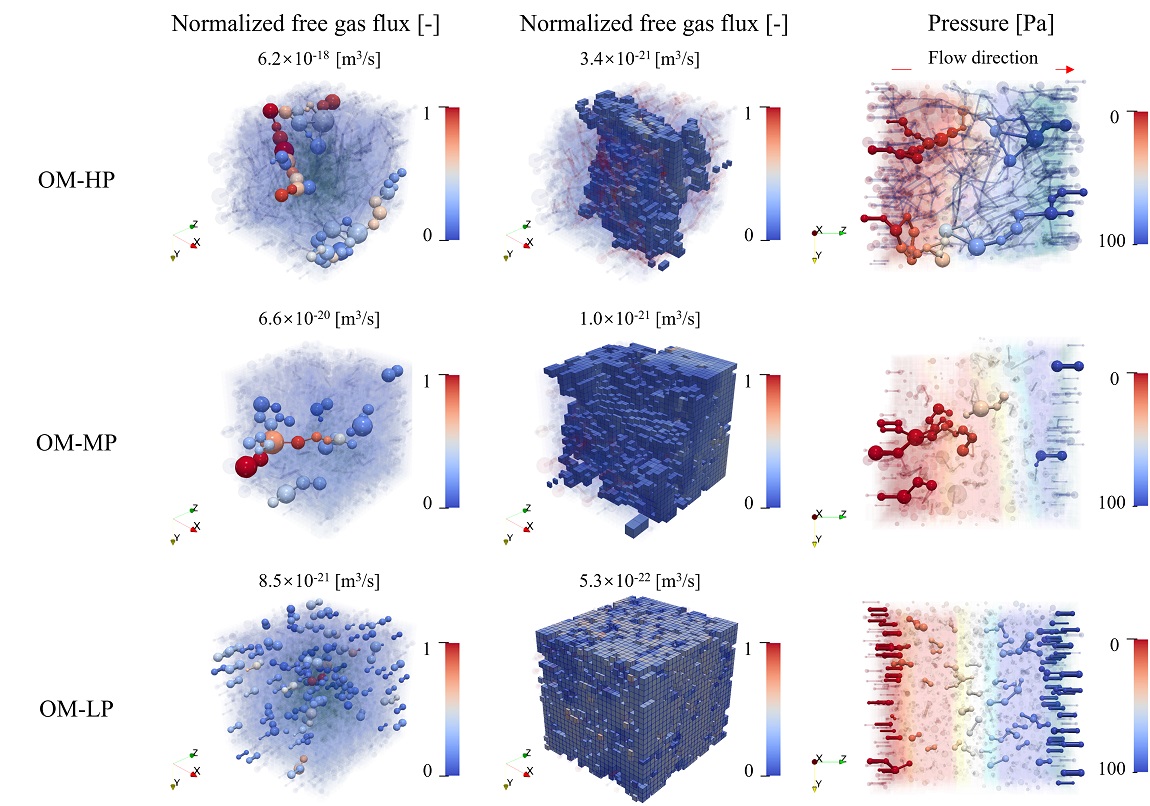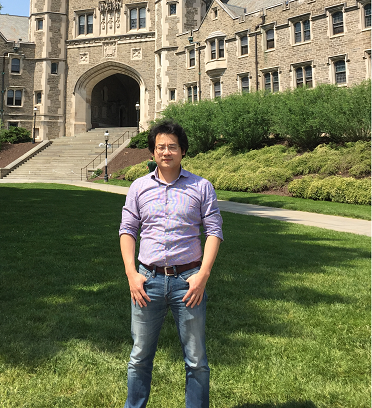The pore-network-continuum hybrid modeling of nonlinear shale gas flow in digital rocks of organic matter
Published in Physics of Fluids, 2025
Organic matter (OM) serves as the primary source of gaseous hydrocarbons in shales. Fundamental understanding of its permeability and gas production characteristics is vital to optimize shale gas exploitation. The focused ion beam scanning electron microscopy (FIB-SEM) imaging can resolve OM macropores with pore radii ranging from tens to hundreds of nanometers, while pore sizes of sub-resolution OM can be characterized using low-temperature gas adsorption. In this work, we focus on multiscale pore structures of OM and contribute to the development of an efficient pore-network-continuum model for simulating nonlinear gas flow in multiscale OM digital rocks, along with its fully coupled implicit numerical implementation. To demonstrate the influence of OM pore structures on its permeability and transient gas production, we select three types of OM featured by their distinct porosities, connectivity of macropores, and pore morphologies. We show that the high-porosity OM with interconnected macropores exhibits markedly different intrinsic permeability, mechanisms of apparent permeability, gas storage, and production behaviors compared to the medium-porosity and low-porosity OM. Moreover, we propose an empirical formula for OM apparent permeability with respect to an effective characterization length used in the calculation of Knudsen number, which will be the key input to the representative elementary volume (REV) size modeling of shale matrix.

Recommended citation: Dongchen Liu, Xuefeng Yang, Deliang Zhang, Shan Huang, Rui Jiang, Jianqi Rong, Zhiwei Wang, Bowen Shi, Chao-Zhong Qin, The pore-network-continuum hybrid modeling of nonlinear shale gas flow in digital rocks of organic matter, Physics of Fluids, 37, 063608, 2025, https://doi.org/10.1063/5.0265700.
Download Paper
